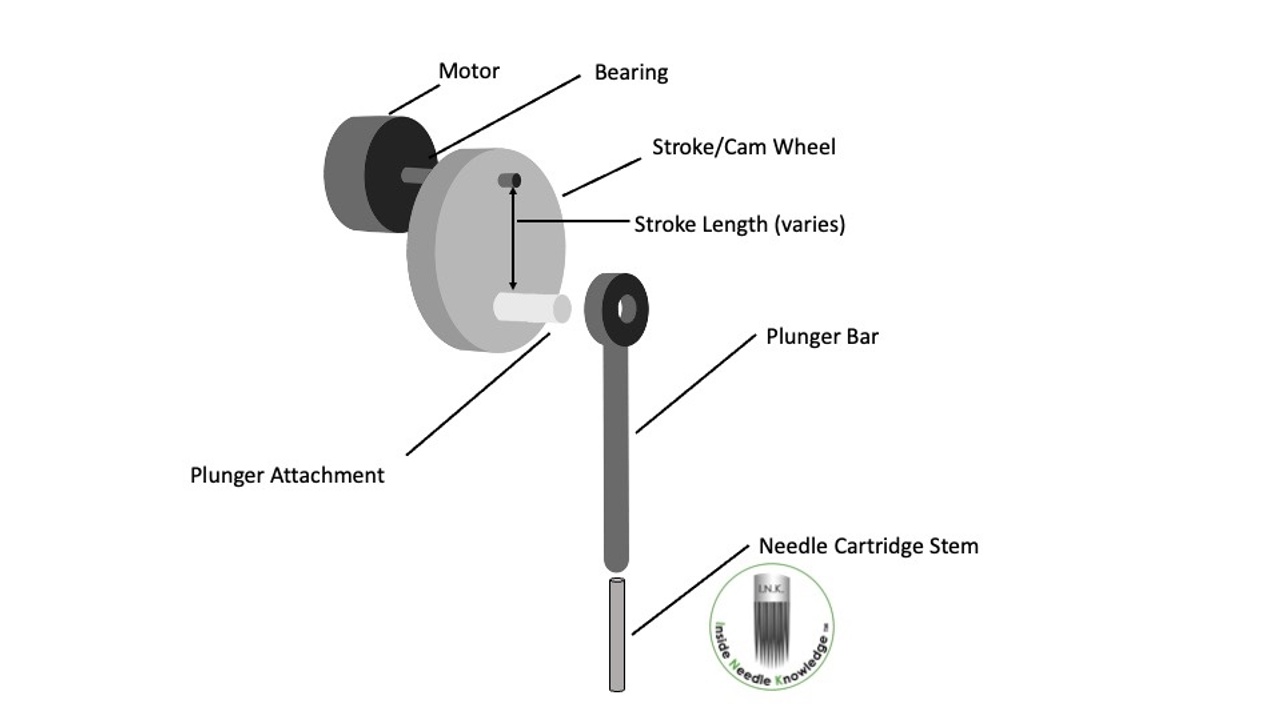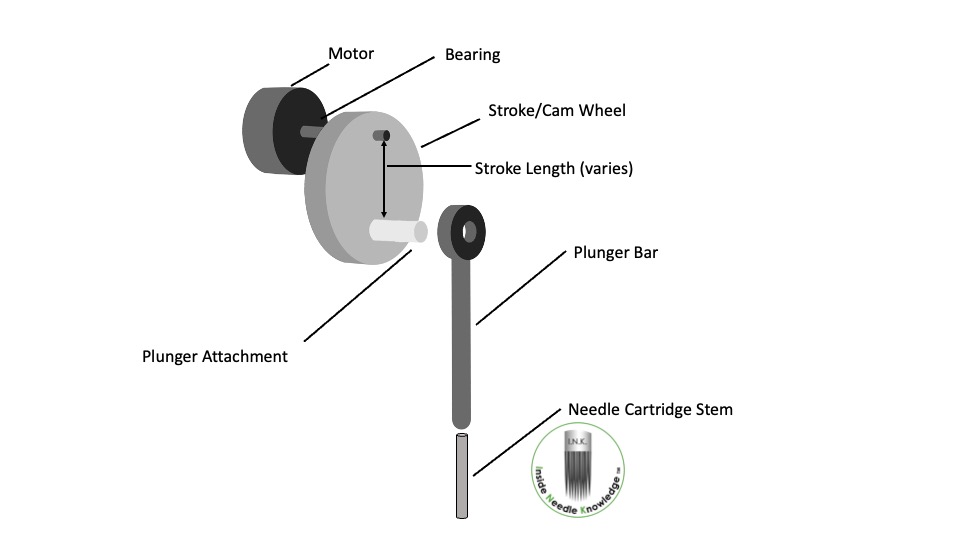Machine Stroke Length

Machine Stroke Length
Machine stroke length refers to the amount of travel the cam wheel or stroke wheel makes around the machine bearing in one rotation. Machine stroke also refers to how soft or hard of a hit a tattoo machine has.

It’s common for PMU Artists to use rotary tattoo machines. Rotary machines have stroke settings anywhere from about 1.8 up to 5.0. Some machines have set strokes and others are adjustable with a turn of the grip (Axys) Some machines come with various cams or stoke wheels that you can replace after taking the machine apart (Xion)
The stroke affects 3 key factors such as:
- How hard the machine hits the skin
- How fast the needle moves up and down
- The maximum amount of needle throw out of the cartridge tip
With a short stroke setting such as a 1.8 or 2.5, the cam or stroke wheel has a short distance to travel. This in turn makes a lower stroke setting a softer hitting machine option on the skin verses a longer stroke machine (4.0+), which is harder hitting. When tattooing with a short stroke length the needles move slowly, retract less, and hit the skin softly. With short stroke machines there is less of a punch and the short stroke length machines are often used to achieve softer shading effects in the skin. Less trauma is created, and multiple passes are possible to build up shading effects. Whereas with a long stroke machine that is punchier, less passes are required as to not cause too much skin trauma.
Machine stroke and thick verse thin skin
Just because a short stroke setting is often specified for softer shading, doesn’t mean you can’t use a 2.5 for lining during an eyeliner. The softer hitting 2.5 machine stroke can be ideal for the thin delicate eye area, whereas a long 4.0 stroke (often specified for lining in the body art world), which delivers a stronger punch, isn’t necessary for the thinner eye area where PMU Artists tattoo. Moving with slow hand speed allowing the needles to deposit more color will help a short stroke deliver a "line".
Certain skins may need more of a punch than a 1.8 or 2.5 stroke in order for needles to penetrate the skin. This is an especially important consideration when using larger needle configurations such as magnums or larger rounds.
What is the maximum amount you can "throw or hang" your needle out with different machine strokes?
This depends on your stroke length! The down and up motion of a complete 2.5 stroke cycle is 1.25 mm down and 1.25mm up.
(See figure A.)
If the needle throw is longer than the needle stroke, the needle won't retract into the cartridge tip and pick up more ink. In turn, you will be tattooing without ink. (See figure B.)

With experience you will notice that is that there is some wiggle room with needle throw and stroke length. Ink viscosity and the needle count can come into play with the needle throw. If you prefer the visibility of throwing your needles out further than the stroke length will accommodate, you will most likely need to dip more often, especially with a single needle which holds little ink on its own.
Machine stroke is often overlooked as it's not simple to understand and connect the importance of it to tattooing. If you're unsure about what stroke length will be most efficient a 3.0-3.5 is referred to as a neutral good all around stroke machine.
Choosing a machine stroke length is a personal choice as is with needles and needle throw. However, skin consideration is paramount so that the least amount of trauma is created in the tattoo process.
To your PMU success,

PMU Artist & Needle Specialist
Inside Needle Knowledge
Purchase the I.N.K. Course Now
